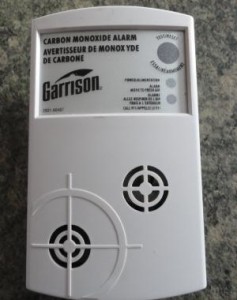This is a question I have been asked a lot recently and wanted to share my findings…
Answer: When you are burning indoors any type of liquid or solid fuel for heating, cooking or other use, you should have an active carbon monoxide detector installed in your home.
If you have fuel-burning appliances on more than one level of your home, you should have a carbon monoxide detector on each floor. For example, if you have a gas range on the main floor and a wood-burning fireplace on the lower level, you should have detectors on each of these floors.
Such fuel-burning appliances are generally tested and safe to use, but should there be a clogged vent line or any part of the appliance that becomes faulty, it could release hazardous levels of carbon monoxide in your home and death can occur within minutes. But you can keep your family safe by using a carbon monoxide detector which can alert you to the presence of this silent toxic gas.
If you work regularly on running vehicles in a closed garage, you should also consider installing a unit in that area.
Types of Fuel-Burning Appliances
- Any type of oil heating appliance such as a space heater, boiler, furnace or fireplace
- Any wood or wood-burning product such as a woodstove, heat stove, fireplace, wood-pellet stove, box or parlor stove
- Any oil, propane or natural gas furnace, cooking stove or range, refrigerator, hot water heater, other appliance or fireplace
- Any products using gas or diesel fuel such as generators (which should only be used outdoors).
- Any bio, agricultural or other fuel-burning type of heating stove
About Carbon Monoxide:
Carbon monoxide is a gas that is present in the air, but it’s the incidence of high levels that can make this gas deadly. This poisonous gas is odorless, colorless and tasteless. Its presence can only be detected with a working carbon monoxide detector. Detectors are available in battery form or hard-wired models. There are also duel models which can detect smoke or carbon monoxide.



